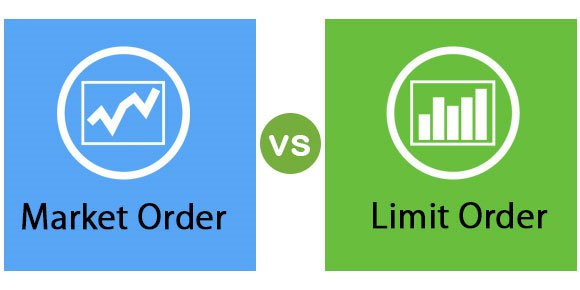Exclusive contract law for data transmission (I)
Since contract law is not unified between jurisdictions and markets, so it is common to see how people develop their own norms for contract law and discuss the degree of differences.
Advertisement
Triston Martin
Feb 28, 2022
Using a market order or a limit order, you may choose the price you want to purchase or sell a stock or mutual fund. It is possible to exchange security for its market value using market orders. As long as the stock price reaches the limit you set, the deal is likely to go through.
Market and limit orders are fundamentally different, yet each form might better suit a particular trading circumstance. The following is a list of things to keep in mind.

A limit order specifies a time frame within which the deal shall be performed in trading. Stocks may only be purchased at a specific price or sold at a certain price. If your brokerage can purchase or sell your investment at that price or more excellent, it will place the deal.
Suppose a stock has a current market price of $100, but you're concerned that the price might suddenly fluctuate. If you want to purchase, you may set a limit order of $102 and only buy if the price falls below that level when the deal goes through.
As a result, he would not be able to buy. Your selling limit order might be set at $98, which means that you'd only sell if the market price were at least $98.
When a non-investor envisions a typical stock market transaction, market orders come to mind. To purchase or sell, a broker must receive an order from an investor and then execute it at the current market price.
As an example, let's say that an investor wants to buy 100 shares of XYZ Inc. at "the market." The deal will be completed promptly for investors who are willing to accept whatever price XYZ shares are now trading at.
Even though market orders have a more significant chance of being executed, there is no guarantee that the deal will be completed. Due to order size and market liquidity, all stock market transactions are subject to market availability and can have considerable variations.
All orders are dealt with following the current order of priority. There is always the risk of market swings occurring between when a broker receives an order and when a deal is completed when one places a market order.

QPR Limited shares are now trading at $63, and Mr. A has put a limit order of $60 to acquire 60 shares. This price has the potential to rise or fall. When the stock price reaches $60, Mr. A's order is triggered, and he must make a purchase.
After purchasing the stock at $60, a fresh limit order must be placed if Mr. A wishes to sell it at $64. At $64, an order is activated, and the new target price is established. Limit orders are beneficial in turbulent market settings because they provide investors with an edge in establishing the price of a stock.
It is a safeguard against overpaying for stock or underpaying for it. Additionally, if the stock's price does not meet the maximum price, the deal will not go through. Prices and potential profits should be weighed alongside other costs, such as the broker's commission and additional fees.
Orders of this type are simple to place and rely on the investor's needs. The stock and number, say 25 Microsoft Inc. shares, must be disclosed to the broker. Shares must be bought or sold as a market order at the current market price.
To purchase or sell a company, investors can apply a simple litmus test to see if they should use a market or limit order. If executing a deal is critical to you, using a market order is your best bet. The best order to use is a limit order if you want to purchase or sell at a specific price point.
Even if you're a fan of the same stock, your tastes may vary over time. For example, you may set your limit order to purchase a stock at an attractive price and then cancel that order and issue a market order instead if the deal doesn't go through.
For a novice investor, deciding on an order type might be difficult. At The Motley Fool, we always utilize market orders, which are more accessible and guarantee that your transaction is completed. As long-term investors, we focus on purchasing and holding high-quality firms' shares, which is the best method to grow wealth.
Limit orders carry the risk that the investor's order will not be executed if the market price never falls inside the limit order restrictions. You could eventually hit your objective, but there isn't enough liquidity to fulfill your order when it comes around. Due to the price constraint, a limit order may only be partially filled at times.
Due to the difficulty in executing limit orders, they may incur more outstanding brokerage fees. Limit orders are a good alternative for low-volume stocks not listed on major exchanges since it might be challenging to ascertain an accurate price.
Advertisement
Exclusive contract law for data transmission (I)
Since contract law is not unified between jurisdictions and markets, so it is common to see how people develop their own norms for contract law and discuss the degree of differences.
Exclusive contract law for data transmission (III)
Contract law can eliminate the impact of information barriers by effectively attracting consumer’s attention and protecting those who were not aware of such rules and restrictions.
FSB and the “Global Stable Coin”
First introduce the tasks and functions of FSB, and then introduce the definition of stable coin and the proposal and definition of "global" stable coin, finally introduce three differences between GSC and ordinary stable coin and other crypto assets—it has a stable mechanism, combines multiple functions and activities, and can be used across jurisdictions.
Impact of the Bitcoin Halving
The Bitcoin halving will have a longer impact on the price than expected because the price fluctuation will lag behind the rebalancing between miners and the market.



